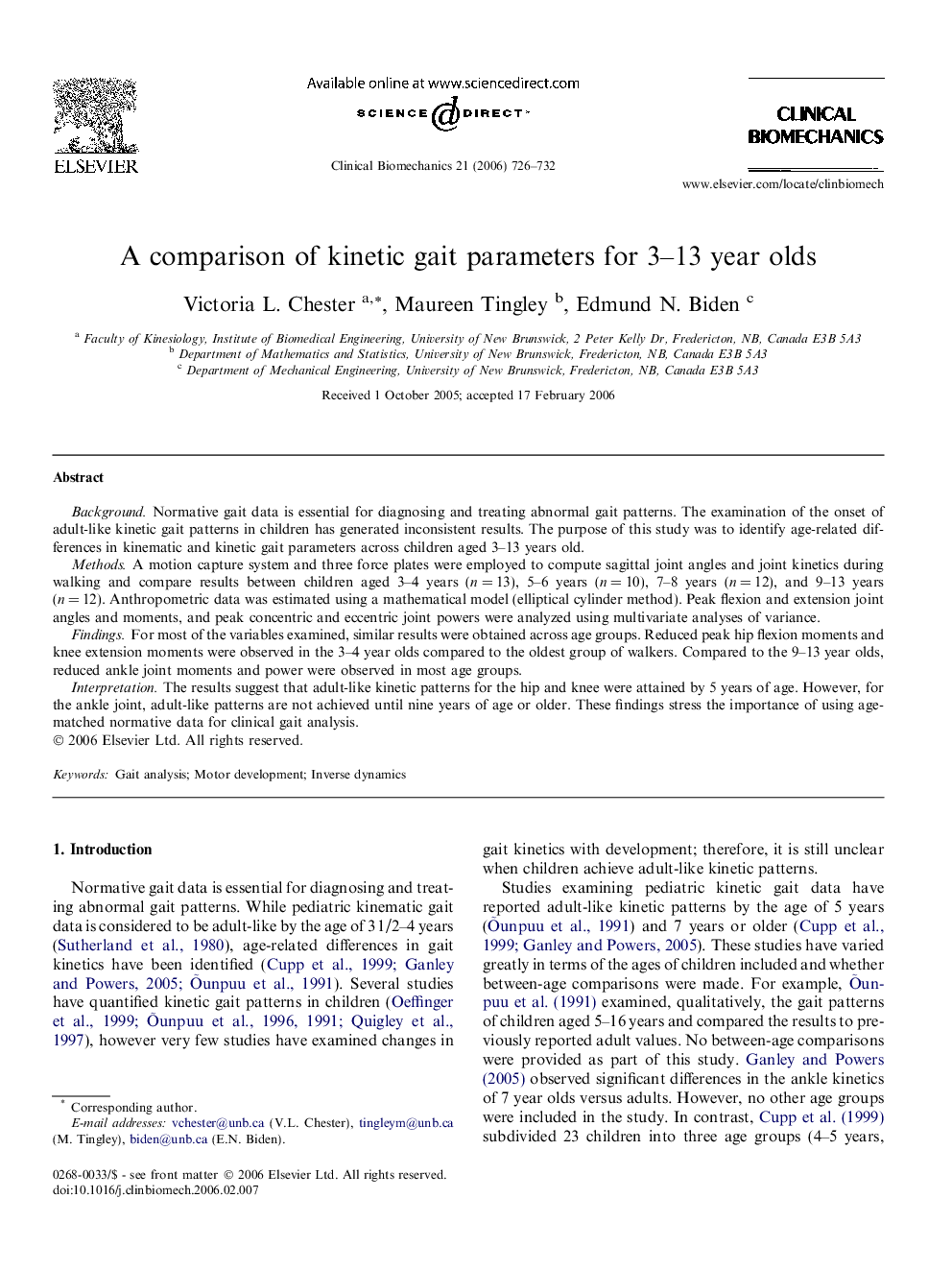| Article ID | Journal | Published Year | Pages | File Type |
|---|---|---|---|---|
| 4051550 | Clinical Biomechanics | 2006 | 7 Pages |
BackgroundNormative gait data is essential for diagnosing and treating abnormal gait patterns. The examination of the onset of adult-like kinetic gait patterns in children has generated inconsistent results. The purpose of this study was to identify age-related differences in kinematic and kinetic gait parameters across children aged 3–13 years old.MethodsA motion capture system and three force plates were employed to compute sagittal joint angles and joint kinetics during walking and compare results between children aged 3–4 years (n = 13), 5–6 years (n = 10), 7–8 years (n = 12), and 9–13 years (n = 12). Anthropometric data was estimated using a mathematical model (elliptical cylinder method). Peak flexion and extension joint angles and moments, and peak concentric and eccentric joint powers were analyzed using multivariate analyses of variance.FindingsFor most of the variables examined, similar results were obtained across age groups. Reduced peak hip flexion moments and knee extension moments were observed in the 3–4 year olds compared to the oldest group of walkers. Compared to the 9–13 year olds, reduced ankle joint moments and power were observed in most age groups.InterpretationThe results suggest that adult-like kinetic patterns for the hip and knee were attained by 5 years of age. However, for the ankle joint, adult-like patterns are not achieved until nine years of age or older. These findings stress the importance of using age-matched normative data for clinical gait analysis.
